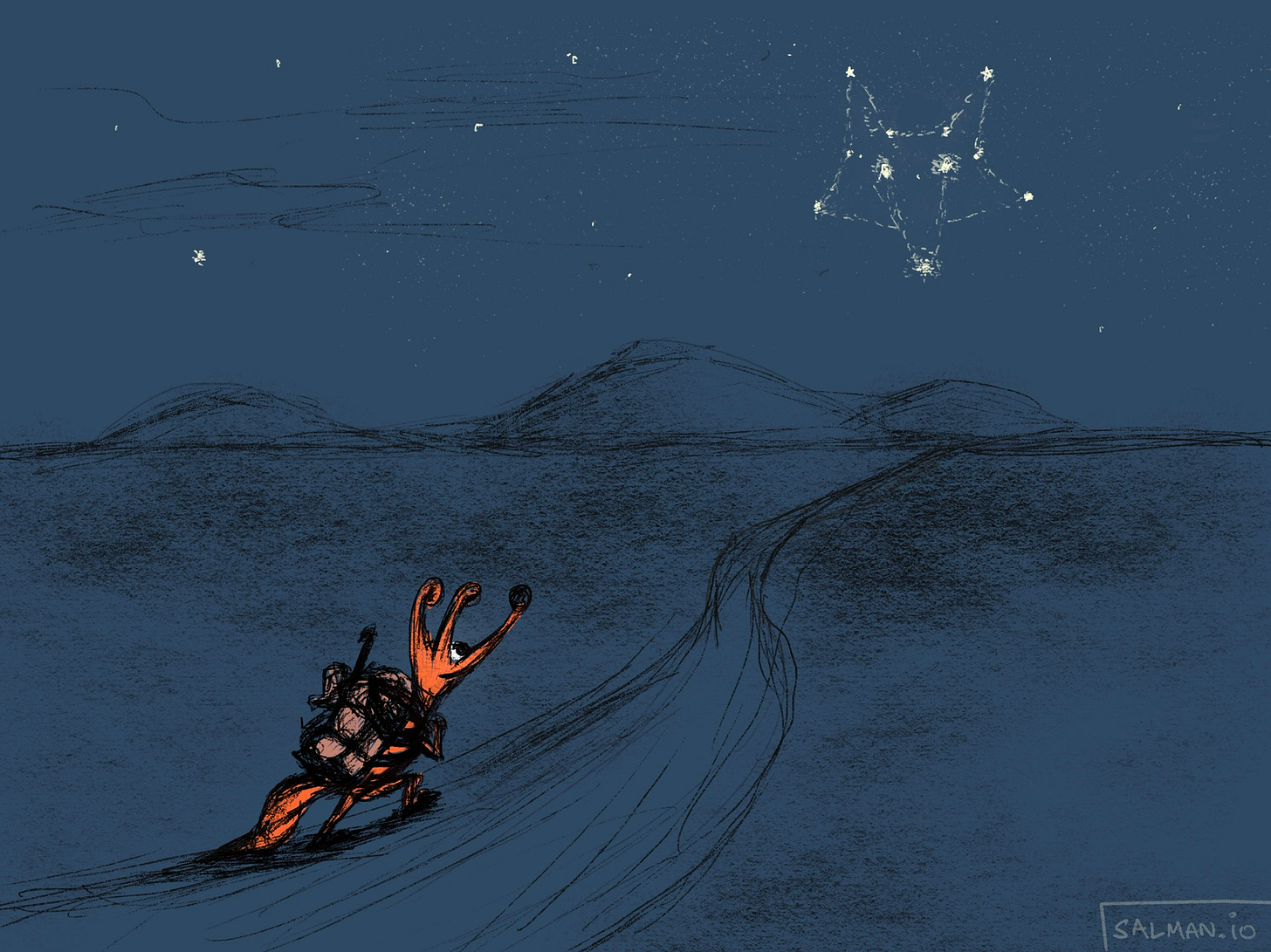🦊 Creative Constellation
#90 — How do you decide what to make? Guide your creativity by clarifying your strategy.
A reader messaged me the other day and asked, “How do you decide on which articles to write?” I struggled to answer at first, as there are many factors at play. A simpler way to approach this is to break it down into two separate questions:
How do you come up with ideas?
How do you decide which ideas to pursue?
I addressed the first question by sharing a previously published note, How to Generate Ideas, in which I explore the three key factors in building my writing pipeline—creative prompts, balanced inputs, and consistent outputs.
As for the second question on deciding between ideas, I’ve written about that too, but it’s scattered across a bunch of different threads, notes and blog posts. So, in today’s newsletter, I’m pulling together the key principles that help me decide what to write about. I don’t treat any of these principles as strict rules—they’re more like loose guidelines.
For each principle below, the title of the section links to a post I’ve written on it, so feel free to click and explore. Let’s get into it!
Growth Is Not The Goal
Back in 2020, I wrote a Twitter thread about the strategy that had emerged through my first year of publishing: “I’m going against typical growth advice—I explore my curiosities, rather than a single topic.” Tweeting this out was liberating. I gave myself permission to keep experimenting, without constantly having to worry about growth tactics. Ironically, a month after tweeting this thread, my polymath essay went viral on Twitter and HackerNews. I think part of the reason it resonated so strongly is that it was mostly a personal story. I wasn’t trying to write something that went viral.
Since then, I’ve maintained this mindset of embracing curiosity over growth, and it has really helped me maintain peace of mind with the slow-and-steady growth of my newsletter.
I later expanded on this idea in a published note, Flip the Script, where I explore the importance of breaking free from platform-dictated ideas of success: “I think we need to define our own measures of success, lest we become permanently subservient to the metrics dictated by the platform Gods. The only way to live and work the way we want is to define our own incentives.”
Peeling the Onion
I have come to think of writing as peeling the onion of my mind. Each layer is a meaningful expression, but it is also just one layer of many. This framing helps me avoid taking any single layer too seriously (for there are so many more to come.)
When I look at writing in this way, it fills me with the energy of curiosity. I become genuinely interested to unveil the mystery of myself: “If what I’m writing now is just the outer layers, what lies hidden beneath?”
Writing is a powerful tool for self-discovery.
Friends Over Followers
I’ve been lucky to have made so many wonderful friends through my online writing. Building friendships became a core motivation to keep writing.
Great relationships are not a free side effect from our creativity, but we can use the power of the internet to find the friends we seek: “The friends we attract will be determined by the signals we broadcast, and the vibe we curate. With every word, every tweet, and every essay, we send a signal to others about what matters to us, what’s meaningful to us, and how we’d like to connect.”
Write It While It’s Hot
I’ve saved this for last, but it might be the most important creative lesson I’ve learned: Follow my energy.
If I’m feeling passionate about an idea, I try my best to act on it as soon as possible. The idea’s energy elevates its priority.
Adhering to this principle ensures I write about things I care about. As a result, my writing becomes more honest, which helps it resonate more with readers.
Readers can always tell when writers care versus when they don’t. Always.
Pulling these ideas together has been a valuable exercise in clarifying my creative strategy, and I hope it will help you inform your own.
I like to think of these creative principles guiding stars in the night sky. When we’re lost, we can look to them to remind us of ourselves, and the direction of our desires. As the Big Dipper guides us North, creative constellations can be a compass for our creativity. Each star adds a little light to our path, but when looked at together, they form a powerful creative constellation.
I’ll leave you with a prompt to ponder:
What are the principles you hold dear in your own creative strategy? When you look to the sky, which stars light up your creative constellation?


Hi Salman, I appreciate these glimpses into your creative process. I see some parallels to what I do for my own newsletter but you've put some additional structure around it, which is useful for another publisher to read and learn from.
I haven't restricted myself to a specific niche but I have broader topics that I write about. I've been doing a bit less long term planning with my original writing and gravitating more to a topic that interests me at a given point in time. Not sure if that's the best long term approach but so far no one's really complaining so that's good.
Thanks for a thoughtful newsletter.
Salman, the timeliness of reading this is so welcome, I also embrace the idea of being guided by the lights of personal collection of stars connected by invisible lines of our making.